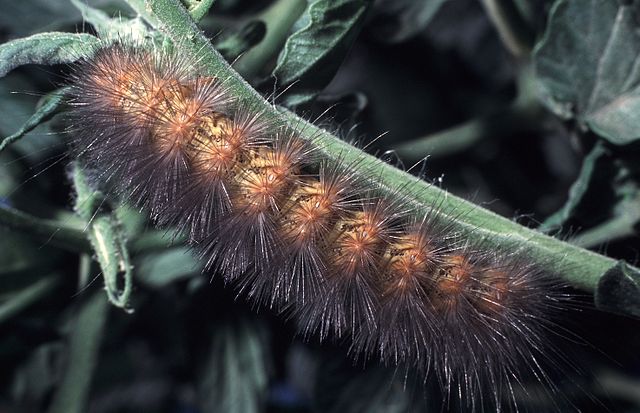Gypsy Moth Caterpillar

"Lymantria dispar MHNT Chenille" by Didier Descouens - Own work. Licensed under CC BY-SA 4.0 via Wikimedia Commons - https://commons.wikimedia.org/wiki/File:Lymantria_dispar_MHNT_Chenille.jpg#/media/File:Lymantria_dispar_MHNT_Chenille.jpg About This Insect Scientific Name: Lymantria dispar Food: just about anything What does it turn into? See it here Does it sting? No. Will it destroy my garden? Yes, and your trees as well. Its appearance is a genuine emergency and you should report finding these caterpillars to the nearest museum or university. Since its importation from Europe in the mid-19th century, this species has been the most destructive forest pest in North America. Click here to see more caterpillars! PanamaInsects.org

